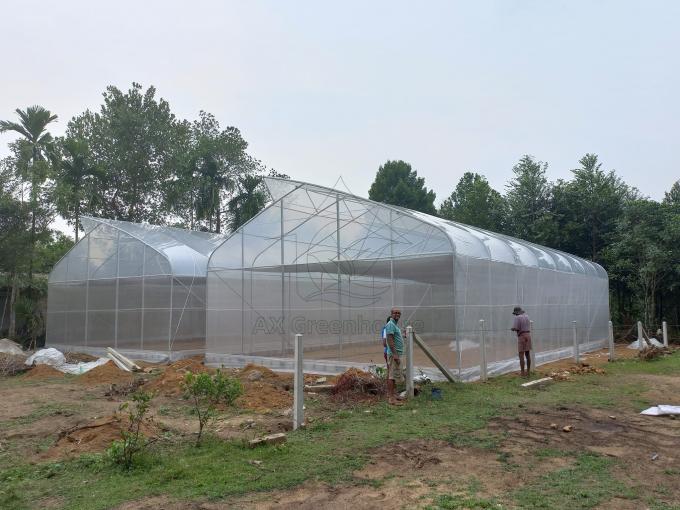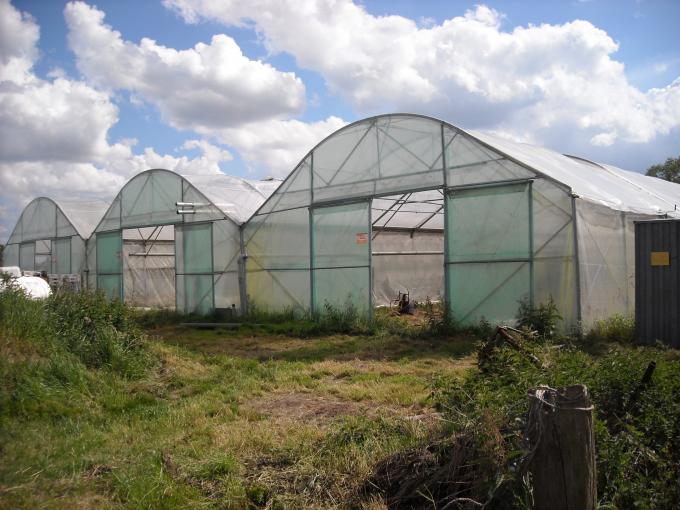The choice of greenhouse construction has strong regional suitability and is largely restricted by local climate conditions. Among them, solar radiation, winter temperature, summer temperature, relative humidity of summer air, wind pressure, snow pressure and other conditions that affect the greenhouse Important factors in the safety and economy of greenhouses.

1. Temperature.
On the basis of understanding the temperature change process in various areas where greenhouses may be built, we focus on estimating the energy consumption that may be required for heating in winter and cooling in summer. When there is no data on the temperature change process, we can focus on a comprehensive analysis and evaluation of the main influencing factors on temperature such as its latitude, altitude, and surrounding mountains, rivers, and forests.
2. Lighting.
Light intensity and illumination hours have a very important impact on the photosynthesis of plants in greenhouses and indoor temperature conditions. They are mainly affected by geographical location and air quality. Therefore, the terrain of the greenhouse construction site must be flat and open, in line with tall buildings. Or the distance between protective forest belts should be such that it does not hinder the ventilation and lighting of the greenhouse.
3. Wind speed and direction.
Wind speed, direction and distribution of wind bands must also be considered during site selection. For greenhouses that are mainly used for winter production or greenhouses in cold areas, they should be constructed in a leeward and sunny area; greenhouses for year-round production should also pay attention to using the dominant wind direction in summer for natural ventilation; avoid openings or strong winds Build greenhouses in areas to facilitate the safety of the greenhouse structure; avoid building greenhouses in cold areas in winter to facilitate thermal insulation and energy saving in winter; avoid choosing greenhouse construction locations at canyon exits, wind outlets, etc. to prevent excessively strong wind or Floods damage greenhouses, and excessive wind vibration will reduce their service life. Due to the frequent northwest winds in winter, greenhouses should generally be built in the south; large-scale greenhouse groups should choose places with natural artificial barriers in the north, and the other three barriers should be kept at a certain distance from the greenhouse to avoid insufficient light.
4. Snowfall.
Structurally speaking, snow pressure is the main load for lightweight structures such as greenhouses. Especially for large and medium-sized multi-span greenhouses where snow drainage is difficult, construction in areas and zones with heavy snowfall should be avoided.

5. Hail disaster.
Hail is crucial to the safety of ordinary glass greenhouses. The hazards of hail should be determined based on meteorological data and local area surveys, so that ordinary glass greenhouses can avoid being built in areas that may cause hail hazards, or try to keep them in this area as much as possible Build a greenhouse with solar panels.
6. Environmental quality.
Air quality mainly depends on the degree of pollution in the atmosphere. The main pollutants in the atmosphere are ozone, perchlorethylene nitrate (PAN), sulfur dioxide, nitrogen dioxide, hydrogen fluoride, ethylene, ammonia, mercury vapor, etc. These pollutions caused by cities, industrial and mining enterprises, etc. have serious harm to plants in different growth stages. In order to ensure that the soil and water sources are not polluted, and thus ensure the high quality of greenhouse products, greenhouse construction locations cannot be selected near factories, downstream of rivers, or downwind from cities. Smoke from burning coal, dust from industry and mining, and dust from dirt roads fall on the greenhouse, which will seriously reduce the amount of light that penetrates the greenhouse; on cold days, the water vapor clouds and mist discharged from thermal power plants into the sky will cause partial shading. Therefore, when selecting a site, you should try to avoid urban polluted areas and choose an area upwind of the areas where the above-mentioned pollution occurs and in an area with good air circulation. Pay attention to whether nearby buildings are affected by highway, industrial and mining dust, and detect the extent of the impact.







